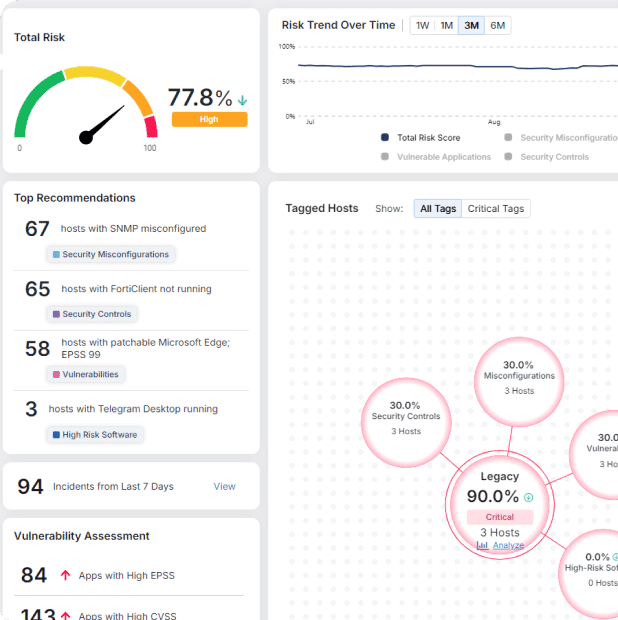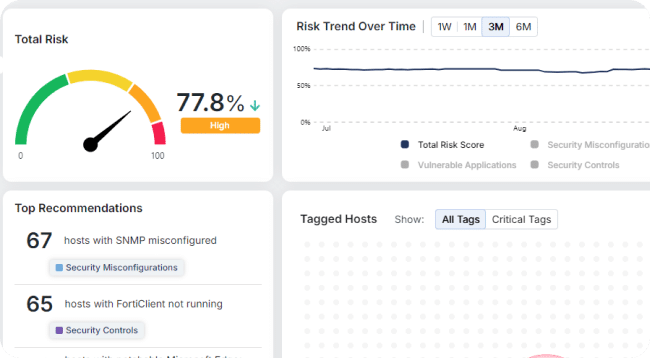Don’t Let Service Accounts Be Your Weakest Link: Proactive Security Strategies

Service accounts are the unsung hero of enterprise IT — silently working in the background to keep applications and systems running. But in our rush to deploy and maintain them, these accounts are often provisioned with broad, persistent privileges, rarely rotated credentials, and virtually no oversight. That combination makes them an irresistible target for attackers.
In today’s threat landscape, service accounts are not just a minor risk—they’re a direct path to domain dominance. Attackers increasingly use them to move laterally, escalate privileges and access sensitive systems—all without deploying malware. That’s why over-permissioned, under-managed service accounts are one of the most exploited, yet underestimated, attack vectors.
In fact, the 2025 Verizon Data Breach Investigations Report (DBIR)2025 Verizon Data Breach Investigations Report (DBIR) reveals that 88% of Basic Web Application Attacks (BWAA) involved stolen credentials—often as the first and only step in the attack. Once inside, attackers move laterally or escalate privileges, exploiting static or misconfigured accounts like service accounts.
And it doesn’t stop there. Credentials were compromised in 35% of breaches last year, with 2.8 billion passwords leaked on criminal forums in 2024 alone. From infostealers to public code repositories, credentials are more exposed than ever. That’s why defenders must shift from reactive monitoring to proactive, preemptive defense.
The Real Danger: Silent Access, Explosive Consequences
Think about it: a compromised service account can quietly unlock access for everything, from databases to production environments. Since these accounts often operate without user interaction and may bypass traditional monitoring, attackers can remain undetected for weeks. Many breaches traced by incident responders start with exactly this kind of abuse.
This risk isn’t theoretical. Modern adversaries exploit stolen or misconfigured credentials to bypass EDR tools and avoid triggering alerts. It’s one of the core techniques in fileless attacks —and one reason reactive, detection-based security strategies often fall short.
Foundational Practices That Still Matter
To minimize risk, every organization should implement these essential controls:
- Principle of Least Privilege (PoLP): Grant service accounts only the absolute minimum permissions required for their specific tasks. Regularly review and refine these privileges.
- Regular Auditing and Monitoring: Continuously monitor service account activity for anomalies and audit their permissions to identify and address any deviations from the principle of least privilege.
- Dedicated Service Accounts: Utilize separate, purpose-built accounts for each application or service to limit the impact of a potential compromise.
Modern Solutions to Reduce Risk
1. Managed Service Accounts (MSAs) and Group Managed Service Accounts (gMSAs):
- For Windows environments, gMSAs offer a powerful upgrade from traditional service accounts. With built-in support for automated rotation and stronger credential management, they reduce administrative burden and limit static, guessable passwords. MSAs are tied to a single server, offering automated password management and simplified SPN management.
- gMSAs take it a step further, allowing you to manage a single service account across multiple servers. This not only enhances security through automated, complex password rotations, but also improves service availability by eliminating dependencies on a specific server.
However, gMSAs have limitations:
- Legacy Compatibility: Older applications might not inherently support gMSA’s OS-managed dynamic authentication, potentially requiring updates or specific configuration.
- OS Version Requirement: gMSA support began with Windows Server 2012, limiting its use on older operating systems.
2. Credential Vaults and Secrets Management:
For environments with diverse operating systems and applications, dedicated secrets management solutions are essential. These credential vaults provide a centralized and auditable way to store, manage, and access service account credentials (and other sensitive secrets).
- Centralized Control: Know exactly who and what has access to service account passwords.
- Strong Encryption: Protect credentials at rest and in transit.
- Auditing: Track access and changes to identify potential misuse.
- Automated Rotation: Many vaults offer automated password rotation capabilities, similar to gMSAs, extending this benefit across your entire infrastructure.
Still, secrets management solutions alone can’t prevent runtime exploitation—especially when attackers exploit living-off-the-land techniques or access accounts through misconfigured software.
Why Preemptive Defense is Essential
Even with strong password hygiene and vaulting practices, attackers continue to find ways to exploit service accounts, often without using malware. That’s why a prevention-first approach is essential.
Morphisec’s Adaptive Exposure Management helps organizations uncover and prioritize hidden risks tied to service accounts, including misconfigurations, unused or over-privileged accounts, and risky third-party software that could become a point of compromise.
And with Morphisec’s patented Automated Moving Target Defense (AMTD) technology, attacks that target service accounts—whether for credential theft, privilege escalation, or lateral movement— are stopped at runtime, before they execute. AMTD dynamically morphs the system’s memory and execution surface, making it nearly impossible for attackers to exploit known or unknown vulnerabilities, even if a service account is compromised.
Eliminate the Hidden Risks of Service Accounts
Poorly managed service accounts may not get the same attention as endpoints or phishing attacks, but they represent a growing and dangerous threat. Traditional detection tools often miss them, especially when attackers avoid dropping malware altogether.
The answer isn’t just better hygiene. It’s better defense. By combining least-privilege best practices, automated credential management and Preemptive Cyber Defense from Morphisec, security teams can stop attackers from leveraging service accounts in the first place.
Discover how Adaptive Exposure Management from Morphisec helps security teams like yours gain control over software lifecycles and reduce exposure to cyber threats. Schedule a demo today to see how Morphisec can protect your infrastructure from within.
Stay up-to-date
Get the latest resources, news, and threat research delivered to your inbox.




















